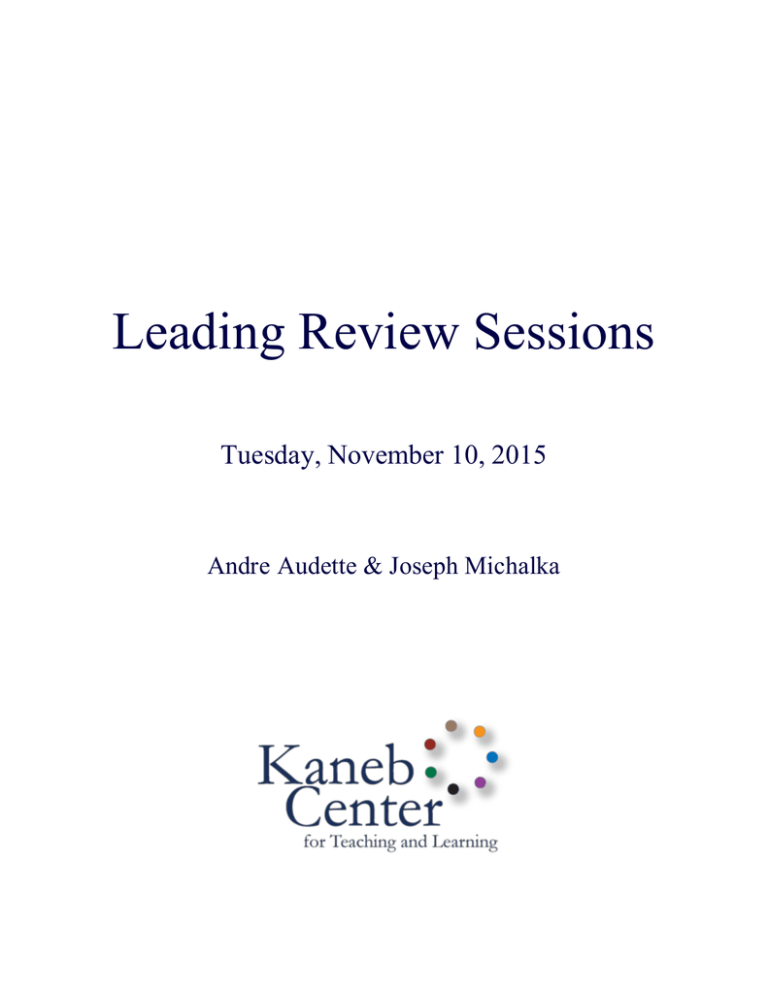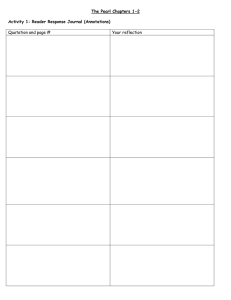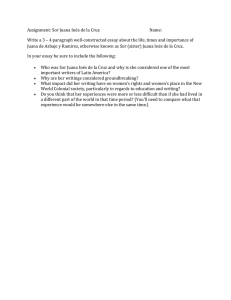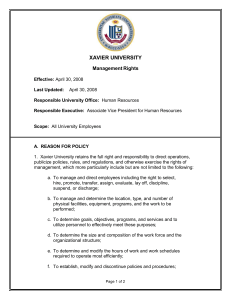Leading Review Sessions - Kaneb Center for Teaching and Learning
advertisement

Leading Review Sessions Tuesday, November 10, 2015 Andre Audette & Joseph Michalka Exam Review Case Studies 1. Juana was preparing a review session for a cumulative final exam for the chemistry class she was TAing for. She polled the class about the best time to meet, reserved the room, and talked to the professor about the exam. Then she got right down to work preparing the perfect exam review. She came up with questions from each chapter of the textbook and each lecture to ensure that students actually remembered the important material from throughout the semester. She also wanted to be sure that she didn’t cover only the material that the professor said would be on the test. The review session was exhausting for Juana and the students (lasting over 2 hours), and to top it off, she got home to several questions from students waiting in her inbox. She spent another 2 hours fielding questions from students who were still confused or who didn’t have time to write down review answers in their notebooks. What could Juana have done to save herself some time and hassle? 2. Xavier’s Intro to Comparative Politics exam review was scheduled for the night before the exam. During that week, he re-read parts of the textbook that seemed likely to be on the test. In his last discussion section, he had also asked students to come prepared with questions they had about the material. At the review, however, the only questions students raised were about the format of the exam and an awkward technical question that Xavier wasn’t prepared to answer. Not wanting to end the review after only 15 minutes, he came up with a mini-lecture on the spot about a difficult topic from a few weeks ago. The review was over in 30 minutes, and students left the review feeling unprepared for the next day’s exam. What could he have done differently to make the review run more smoothly? 3. No sooner had the history midterm finished when Emily the TA saw a group of students approaching the professor. She heard them start complaining that she had not covered a number of topics at the review session that ended up being on the test. Emily felt really embarrassed, but she had not known what was going to be on the test either and just picked the topics she understood the best. How was she going to explain herself to the professor and prevent this from happening again? 4. After grading and tabulating all of the physics tests, Samuel realized that, though the grades were fine overall, a large number of students had only gotten partial credit on questions 2, 4, and 7. Looking back at those specific questions, he realized that while he had covered the material that those questions addressed in his review lecture, the students still didn’t seem to understand how to run the calculations properly. How can Samuel modify his review sessions in the future to prevent this? 10 Tips for Effective Review Sessions 1. Reserve a classroom for your review session early on. Consider polling students to come up with a time that fits into a majority of students’ schedules. Be sure to reserve a room large enough to fit the number of students and any group work or other learning activities you plan to include. 2. Schedule the review for earlier than the night before the exam so that if additional questions are raised you have time to address the issue before the test. 3. Poll the students ahead of time to determine which topics they feel weakest on. Rather than asking the entire class to come up with questions (and having nobody follow through), you could specifically ask each student to come up with at least one question to bring to the review or to post online. 4. Plan a structure for the review session like you would for a typical class. The more you prepare ahead of time, the less you will have to do on the spot. 5. If you are a teaching assistant, talk to the professor about the exam before holding the review session. Ask about the format of the exam and what topics will be on the test. You could also ask to get previous copies of the exam or previous TAs’ review session notes. If you are the instructor of record, be sure to have thought about these questions before holding the review. 6. Start the exam review with an overview of the exam format and give students tips for what to focus on and how to maximize their study time. 7. Discuss how you will be conducting the review session and why you chose the particular format. Remind students or include a disclaimer that you will not cover everything that will be on the exam. 8. Prepare examples that match up with the types of questions that will be on the exam. For example, if the exam will be primarily multiple-choice questions, tailor your exam review to include more multiple-choice questions; if it will include calculation problems, give students practice with calculation problems. 9. Make use of active learning exercises throughout the review session to engage students and help them review the material at a deeper level. 10. If you don’t know an answer, don’t fake it. Tell students you will find the answer and make it available to them before the exam. “META” BONUS TIP: 11. Review the review session as you go: are students engaged or falling behind? Is there some material you can skip or spend more time on? Come prepared with some extra material or an activity if you find you are going quicker than planned. Active Learning Techniques for Review Sessions Concept Map: have students sketch a map connecting the topics on the exam Group Problem-Solving: provide a set of problems for students to solve as a group Discussion: discuss why the material might be important for the exam (allows students to make connections for essay questions, for example) Notebook Comparison: have students compare their notes on a topic or section and discuss why they recorded the information differently Clickers, Poll Everywhere, or Top Hat: create interactive questions that students can answer anonymously o If you do not have technology available, have students write lettered answers on a notecard or hold up the number of fingers for their answer Reflection Time: give students time to write down an answer or think about it for a minute before responding (this provides hesitant students a chance to gain confidence before participating) Think-Pair-Share: have students think about the answer to a question and share their answer and reasoning with another student, then discuss as a class Write Exam Questions: give students a topic or an important section of the reading and ask them to write and answer a potential exam question Gamify the Review: use a game to review for the exam (the classic example is creating a Jeopardy game with the material on the test) Lists: have students work together to come up with the five most important facts, theories, or concepts from the course, and have them compare their lists and discuss as a class Review Online: use optional videos, online quizzes, or other materials to supplement the exam review or give those unable to make it a chance to review on their own time Design Your Review Session Class: Date/Time/Location: Review Strategy and Techniques: Topics: Notes:



